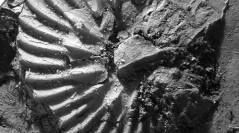

 Geodiversitas
39 (2) - Pages 185-212
Geodiversitas
39 (2) - Pages 185-212In 2013, several boreholes were drilled in northern France, close to Juzanvigny in the Aube department, which is the type area of the Albian stage. From the top to the base of the boreholes, several formations including the “Argiles tégulines de l’Aube”, namely the “Gault” auct (lower and middle Albian), the “Sables verts de l’Aube” (upper Aptian), the “Argiles à Plicatules” (lower Aptian), the “Sables et argiles bariolées” (upper Barremian) and the top of the “Argiles ostréennes” (lower Barremian) were recovered. A detailed description of the lithological succession was performed to improve knowledge of the Lower Cretaceous of the eastern Paris basin. The main results are the following: – Regarding the Gault Clay, corresponding to the “Argiles tégulines de l’Aube” (Albian) the conjunctive use of marker beds (litho- and bio-ecoevents recognized in a large area across the Paris basin) and paleontological data (ammonites) leads to propose accurate correlations with other sections in Aube, Yonne and the Perthois; – a thin layer of glauconitic sandy clay located in the lower part of the “Argiles tégulines de Courcelles” reached the Aube valley diluting gradually. This sandy layer originated from the “Sables des Drillons” well-known in the Yonne area. The lower limit of this lithological unit is dated from the Otohoplites subhilli ammonite zone, while its upper limit is diachronic. Sandy facies are thinning northward and are replaced by clays; – the lower part of the “Argiles tégulines de Courcelles”, equivalent to the “Argiles de l’Armance” from Yonne, considerably thins to the north and passes laterally to glauconitic sands (“Albian Greensand”); – along the eastern edge of the Paris Basin, between the Meuse to the north and Yonne to the south, the Lower Greensand is made up of several lithological units, from top to bottom: “Albian Greensand” (lower Albian), “Sables verts de l’Aube (upper Aptian, likely Clansayesian) and the “Sables d’Outines Formation” newly created following stratigraphic rules of nomenclature and replacing the “white Sands” that are actually glauconitic (upper Aptian, likely Gargasian); – the “Argiles à Plicatules” Fm exhibits a cyclicity in its upper part and encompasses the ammonite zones Deshayesites deshayesi and Tropaeum bowerbanki from the Lower Aptian (Bedoulian); – the “Sables et argiles bariolées”, wealden facies, are not marine deposits that have undergone lateritic weathering as recently suggested by some authors, but correspond to continental deposits; – pluridecimetric levels of “sanguine” corresponding to bright red, iron oxide platelets described in outcrops at upper and lower limits of the “Sables et argiles bariolées”, have a secondary origin. Finally, the “Argiles ostréennes” Fm consists at least in part, of a series of rhythmic tempestites.
Litho-biostratigraphy, Albian, Aptian, Barremian, France, Eastern Paris basin, ammonites.